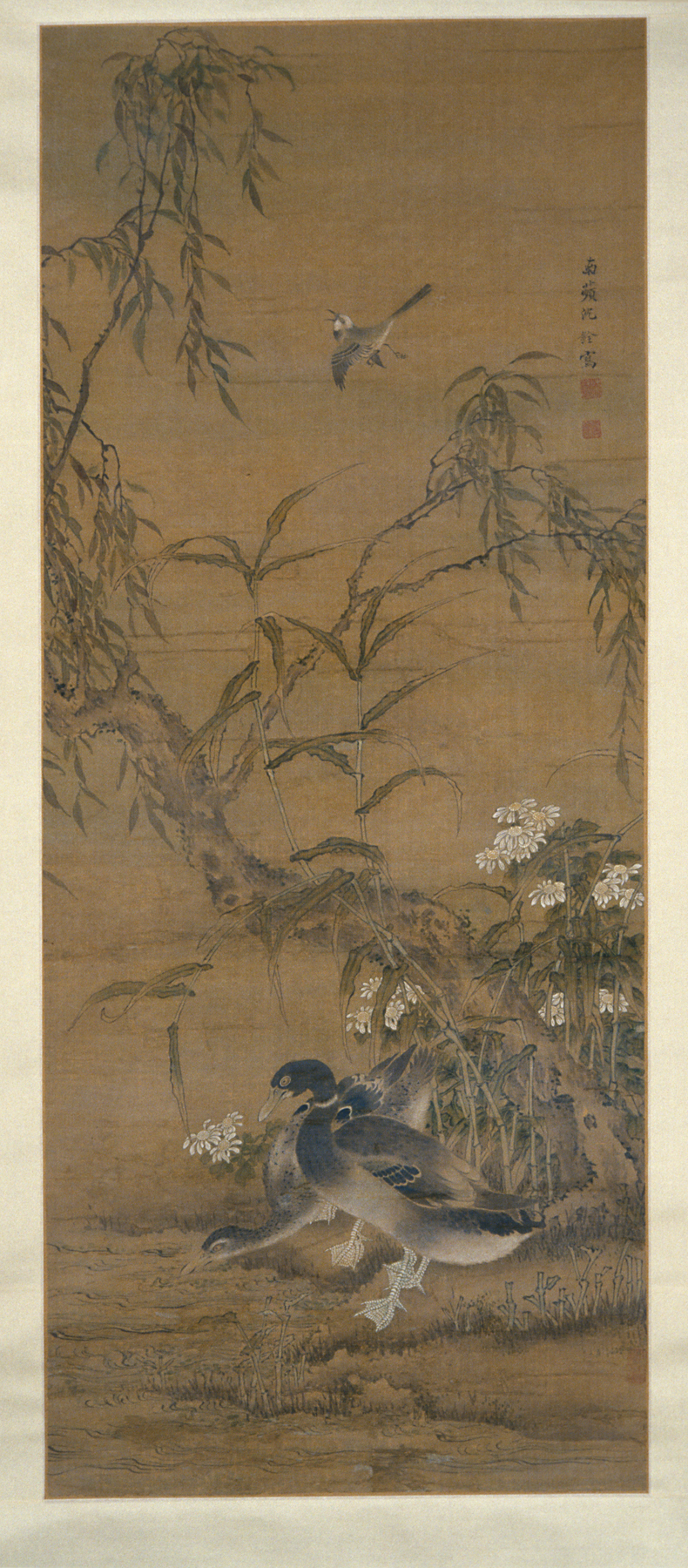Ducks in an Autumn Scene, Shen Quan
Artwork Overview
Shen Quan, artist
circa 1682–1760
Ducks in an Autumn Scene,
1725–1760, Qing dynasty (1644–1911)
Where object was made: China
Material/technique: ink; silk; color
Dimensions:
Image Dimensions Height/Width (Height x Width): 117.7 x 48.4 cm
Image Dimensions Height/Width (Height x Width): 46 5/16 x 19 1/16 in
Mount Dimensions (Height x Width x Depth): 206.4 x 63 cm
Mount Dimensions (Height x Width x Depth): 81 1/4 x 24 13/16 in
Image Dimensions Height/Width (Height x Width): 117.7 x 48.4 cm
Image Dimensions Height/Width (Height x Width): 46 5/16 x 19 1/16 in
Mount Dimensions (Height x Width x Depth): 206.4 x 63 cm
Mount Dimensions (Height x Width x Depth): 81 1/4 x 24 13/16 in
Credit line: Gift of Mr. and Mrs. Mitchell Hutchinson
Accession number: 1986.0087
Not on display
If you wish to reproduce this image, please submit an image request


